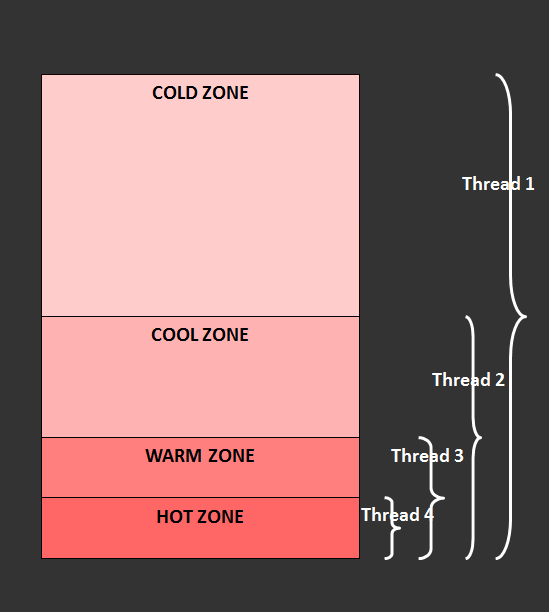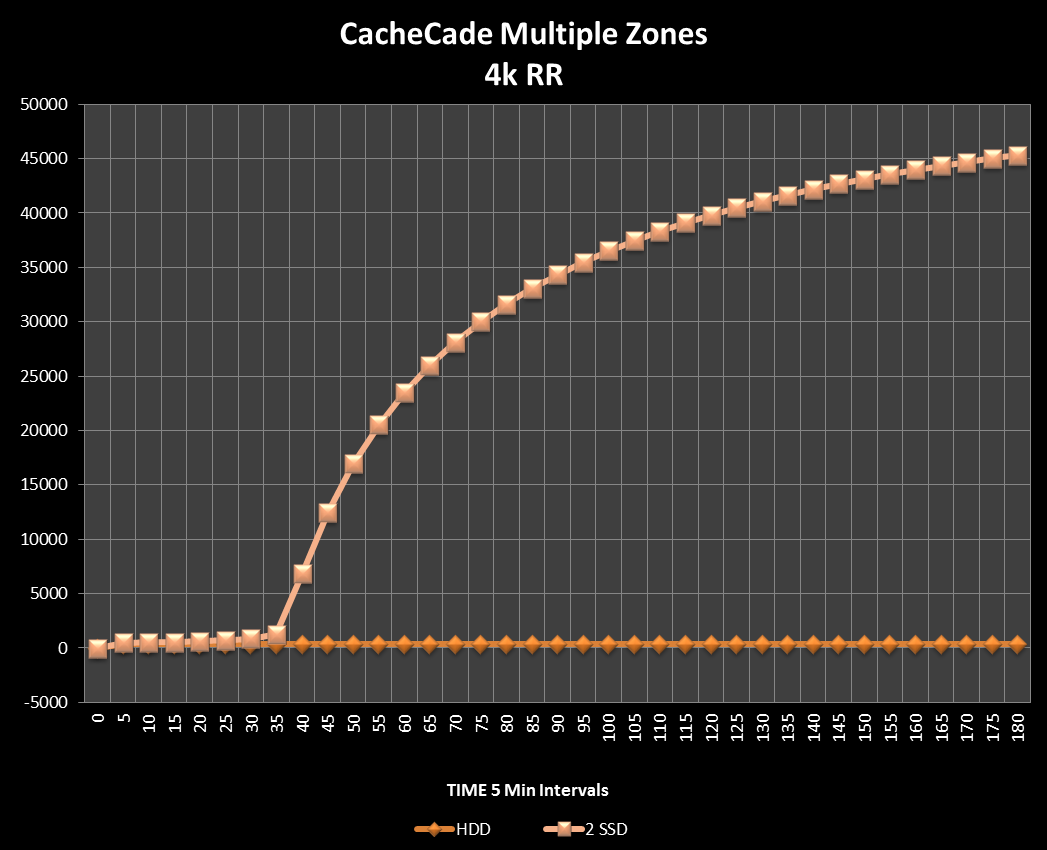Zoned Setup- A more complex read pattern that is much more demanding of the caching algorithm. The overlapped cold-cool-warm-hot data regions IOMeter benchmark is the most stressful on the hot data caching algorithms and so results typically reach performance in the 30,000 to 45,000 IOPS range. The base array in this scenario is generating around 500 IOPS before acceleration, which is much higher than the previous tests, mainly because of the higher queue depth.
This approach uses 4 individual threads accessing four different regions of the disk itself.
 Thread 1- 800 GB range with QD 1
Thread 1- 800 GB range with QD 1
Thread 2- 700 GB range with QD2
Thread 3- 600 GB range with QD4
Thread 4- 50 GB range with QD 32
The fourth thread was intentionally designed to be able to fit into the cache of the controller, and with its higher QD it becomes the most accessed data, and is the data that we are monitoring for acceleration. As you can see, this is a much more intensive benchmark that is designed to test very high usage patterns from multiple threads.
Here you can see that again we are reaching the projected speeds with this type of drive access. This is an excellent amount of performance acceleration, one that would surely make it worth the time for the upgrade. To be able to simply pop in 2 SSDs, and to install a CacheCade key onto the card, is a very small amount of investment of time and money for an absolutely tremendous return, even under demanding situations.
A quick click will bring the image up to full size.
NEXT: Conclusion
Page 1- Introduction
Page 2- Nuts and Bolts
Page 3- Maximizing Benefits
Page 4- MLC vs SLC
Page 5- Test Bench and Protocol
Page 6- Single Zone Read
Page 7- Hot-Warm-Cool-Cold
Page 8- Conclusion
 The SSD Review The Worlds Dedicated SSD Education and Review Resource |
The SSD Review The Worlds Dedicated SSD Education and Review Resource |

